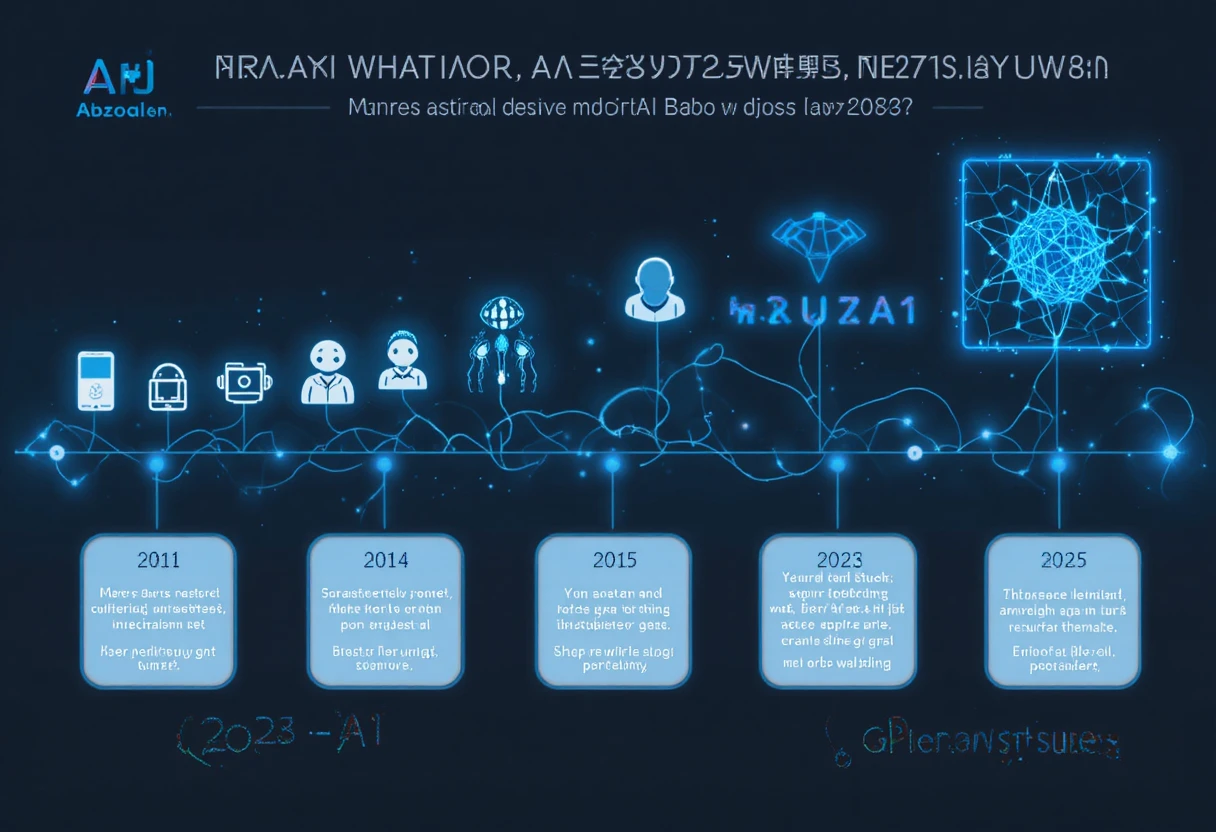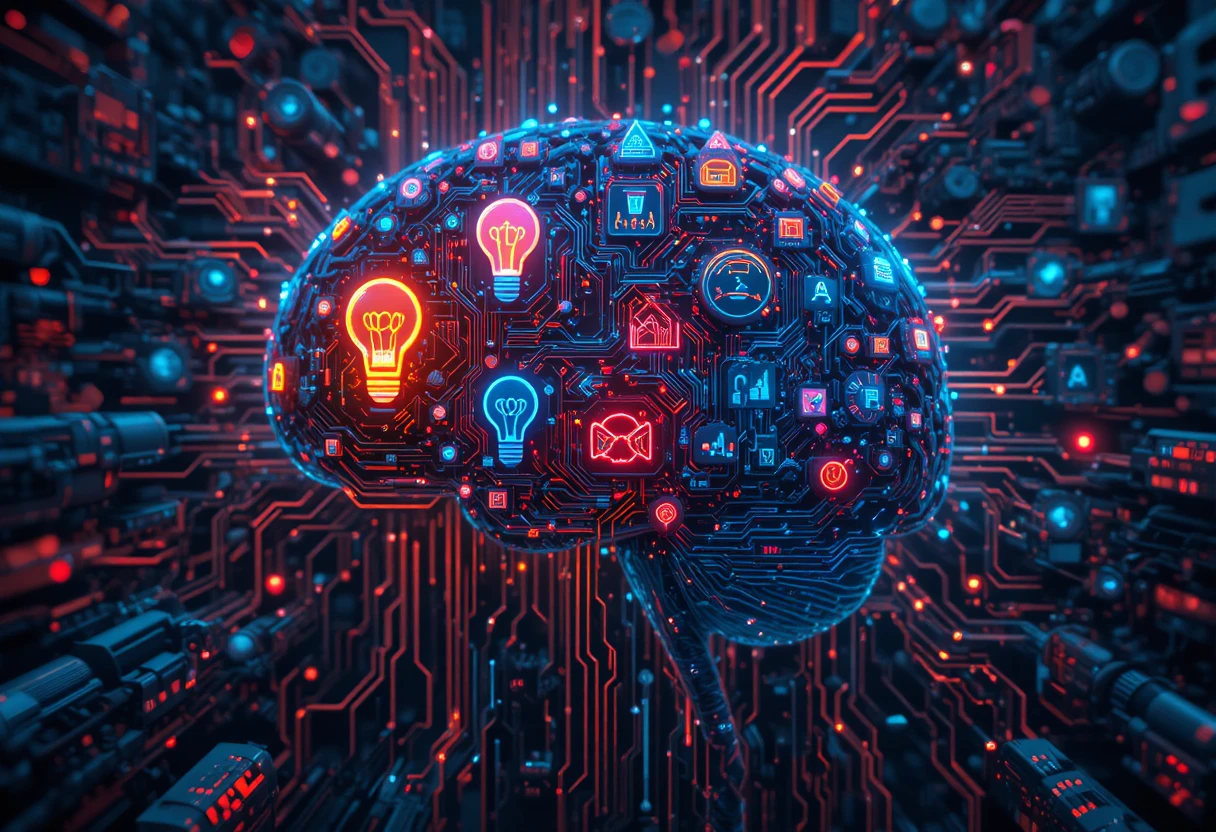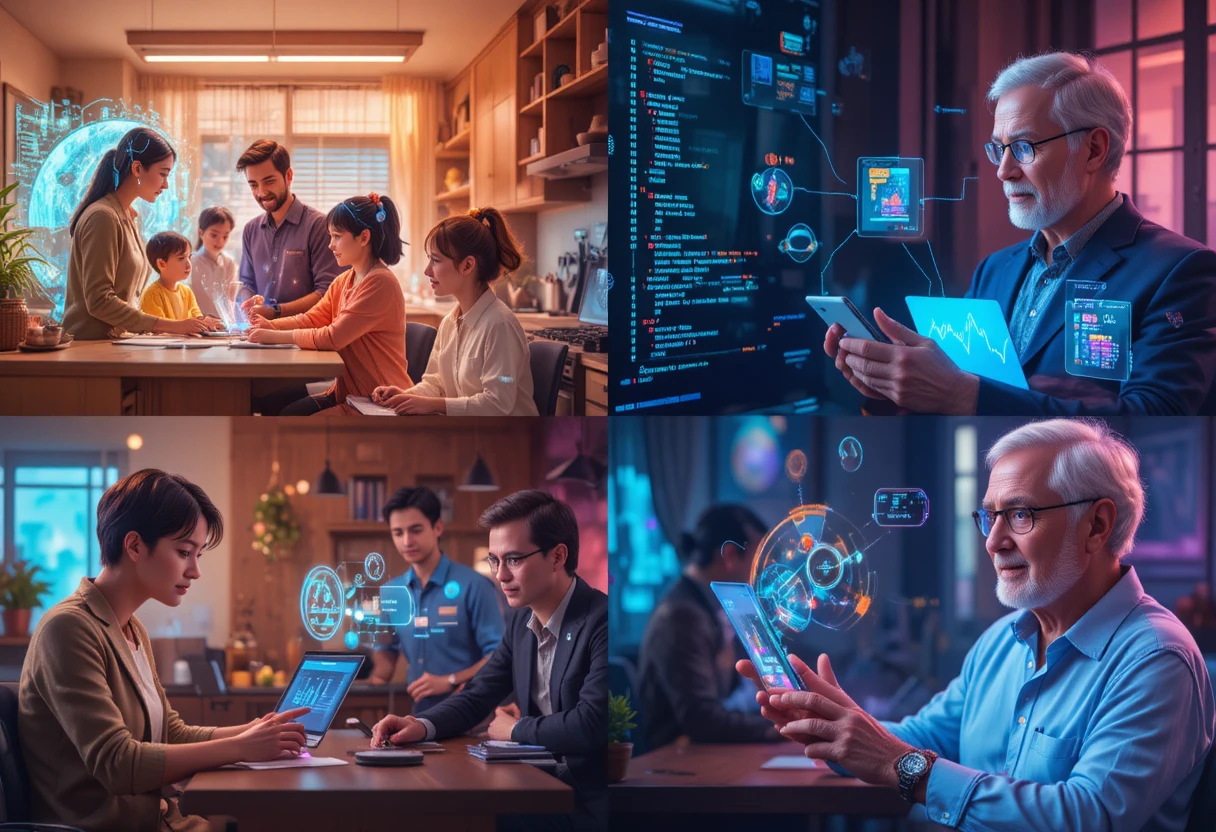AI-Powered Smart Assistants
In the fast-paced digital age of 2025, AI-powered smart assistants have transcended their origins as simple voice-activated tools, evolving into indispensable companions that seamlessly integrate into every facet of our lives. From orchestrating morning routines in smart homes to streamlining complex business workflows, these intelligent systems leverage cutting-edge advancements in natural language processing (NLP), machine learning, and generative AI to anticipate needs, automate tasks, and foster meaningful interactions. As we stand on October 22, 2025, the global market for AI-powered virtual assistants is projected to reach $42 billion, underscoring their explosive growth and pervasive influence. This comprehensive exploration delves into the evolution, technologies, applications, trends, challenges, and future trajectories of AI-powered smart assistants, illuminating how they are reshaping productivity, personalization, and human-machine symbiosis.
The Evolution of AI-Powered Smart Assistants
From Basic Voice Commands to Contextual Intelligence
The journey of AI-powered smart assistants began in the early 2010s with rudimentary voice recognition systems like Apple’s Siri (introduced in 2011) and Amazon’s Alexa (launched in 2014). These early iterations relied on scripted responses and basic keyword matching, handling simple queries such as setting alarms or playing music. However, by 2025, the landscape has dramatically shifted. Today’s assistants, powered by large language models (LLMs) like GPT-4o and Claude 3.5 Sonnet, exhibit contextual awareness, multi-language fluency, and real-time decision-making capabilities.
This evolution mirrors broader AI progress. In the initial phase (2010-2015), assistants focused on accuracy in speech-to-text conversion, achieving around 80% comprehension rates. The mid-2010s introduced machine learning enhancements, enabling personalization through user data analysis. By 2020, integration with IoT devices proliferated, turning assistants into central hubs for smart ecosystems. Fast-forward to 2025, and we witness the dawn of generative AI integration, where assistants not only respond but also create content, predict outcomes, and collaborate autonomously. According to Gartner’s 2025 Tech Trends Report, over 62% of professionals in hybrid work environments now depend on these tools for daily task management.
Consider the transformation in user interaction: Early Siri might misinterpret “Play some jazz” as a literal command, but modern assistants like Google Assistant discern nuances, suggesting playlists based on mood inferred from recent calendar events or voice tone. This progression is fueled by exponential improvements in computational power and data availability, with models now processing petabytes of multimodal data—text, voice, images, and even haptic feedback.
Key Milestones in Development
Several pivotal milestones have defined this trajectory. In 2023-2024, the entry of Google Gemini and xAI’s Grok pushed boundaries, blending assistants with AI co-pilots capable of ethical reasoning and creative problem-solving. By early 2025, breakthroughs in multimodal AI allowed seamless handling of diverse inputs, as seen in devices like the latest Echo Show series, which interprets visual cues alongside voice commands.
The COVID-19 pandemic accelerated adoption, with remote work surging demand for virtual collaboration tools. Post-pandemic, sustainability concerns drove energy-efficient edge computing integrations, reducing cloud dependency and latency. Today, assistants like Anthropic’s Claude excel in data privacy, processing sensitive information locally to comply with regulations like GDPR 2.0. These milestones not only enhanced functionality but also democratized access, with free tiers of Grok 3 available on platforms like x.com, enabling broader experimentation.
As we reflect on this evolution, it’s clear that AI-powered smart assistants have matured from novelties to necessities, laying the groundwork for even more immersive experiences ahead.

Core Technologies Powering Modern AI Assistants
Natural Language Processing and Generative AI
At the heart of AI-powered smart assistants lies natural language processing (NLP), a subfield of AI that enables machines to understand, interpret, and generate human language. In 2025, NLP has advanced to near-human levels of comprehension, incorporating sentiment analysis, sarcasm detection, and dialect recognition. For instance, models like GPT-4o can parse ambiguous queries such as “What’s the best way to unwind after a tough day?” by cross-referencing user history, weather data, and wellness trends to suggest a tailored playlist or meditation session.
Generative AI represents the next leap, allowing assistants to create original content. Tools like Jasper or GitHub Copilot, integrated into assistants, generate code snippets, marketing copy, or even financial reports from vague prompts. This capability stems from transformer architectures, which process sequential data with attention mechanisms, achieving up to 95% accuracy in creative tasks. Deep learning further refines these models, using neural networks trained on vast datasets to mimic human-like reasoning.
Multimodal Integration and Machine Learning
Multimodal AI, a hallmark of 2025 innovations, fuses voice, text, visuals, and sensors for holistic interactions. Imagine an assistant analyzing a photo of your fridge contents via your smartphone camera to suggest recipes, then verbally guiding you through preparation while adjusting for dietary preferences learned from past interactions. Platforms like Google’s Gemini exemplify this, reducing errors by leveraging multiple data sources.
Machine learning (ML) underpins adaptability. Supervised and unsupervised algorithms enable continuous learning from user feedback, with reinforcement learning optimizing actions based on rewards (e.g., quicker task completion). Edge AI, processing data on-device, ensures low-latency responses—critical for real-time applications like autonomous driving aids. Quantum-inspired computing hints at future accelerations, potentially solving complex optimization problems in seconds.
These technologies collectively empower assistants to transition from reactive tools to proactive partners, enhancing efficiency across domains.

Popular AI-Powered Smart Assistants in 2025
Amazon Alexa: The Smart Home Maestro
Amazon’s Alexa dominates the consumer market, powering over 100 million devices worldwide. In 2025, Alexa generates $10.5 billion annually through e-commerce integrations and smart home control. Its strengths lie in versatility: controlling lights, thermostats, and security systems via routines that learn from habits. Recent updates include “Alexa Hunches,” which proactively alerts users to anomalies like open garage doors, and generative features for recipe creation.
For businesses, Alexa’s API enables custom skills, such as H&M’s Ada chatbot for personalized shopping assistance. With Matter protocol support, it ensures interoperability across brands, making it a cornerstone of unified ecosystems.
Apple Siri: Privacy-First Personalization
Apple’s Siri emphasizes on-device processing for privacy, a key differentiator in 2025. Enhanced with Apple Intelligence, Siri now handles complex queries like “Summarize this email thread and draft a response,” integrating seamlessly with iOS, macOS, and HomeKit. Over 92% of U.S. users rely on Siri for searches, per recent stats.
Siri’s multimodal prowess shines in Vision Pro integrations, where it interprets gestures and spatial audio for AR experiences. Customizable personalities—professional for work, casual for leisure—align with Envision’s ‘ally’ assistant trends, fostering emotional engagement.
Google Assistant and Emerging Players
Google Assistant excels in contextual search, leveraging Google’s vast data trove for predictive responses. It manages 3.5 billion daily voice searches, from navigation to health queries. Features like “Continued Conversation” allow fluid dialogues without repeated wake words.
Emerging contenders include Anthropic’s Claude for creative writing and xAI’s Grok for witty, truth-seeking interactions, accessible via apps with voice mode. Microsoft’s Copilot integrates into Office suites, boosting productivity by 55% in coding tasks. These players diversify the field, catering to niches like enterprise (IBM Watson) and accessibility (Envision Glasses for the visually impaired).
Each assistant brings unique flavors, but their convergence via open standards promises a more interconnected future.
Applications Across Industries
Enhancing Everyday Life and Smart Homes
In daily life, AI assistants automate routines, from brewing coffee at dawn to optimizing energy use. Smart homes, projected to hit $135 billion by 2025, rely on assistants like Alexa for personalized automation—learning to dim lights at bedtime or preheat ovens based on schedules. Delta Airlines’ AI travel companion exemplifies mobility, offering real-time updates and recommendations.
Healthcare sees virtual monitors tracking vitals via wearables, predicting issues like fatigue and scheduling interventions. Parenting aids suggest activities tuned to a child’s mood, while education tools like personalized tutors adapt curricula in real-time.
Revolutionizing Business and Productivity
Businesses harness assistants for 40% efficiency gains. GitHub Copilot accelerates coding by 57%, suggesting completions and debugging. In sales, Gong AI analyzes calls for insights; in finance, algorithmic trading optimizes strategies.
Customer service chatbots like Ada’s handle inquiries, boosting engagement. Manufacturing employs AI for predictive maintenance in smart factories, minimizing downtime. Overall, these applications close labor gaps, as in Japan’s caregiver robots.
Trends Shaping 2025 and Beyond
Hyper-Personalization and Emotional Intelligence
Hyper-personalization anticipates needs, like suggesting workouts based on sleep data. Emotional AI detects stress via voice, offering calming interventions—extending to wearables for health monitoring.
Multi-agent systems enable collaboration, where agents delegate tasks autonomously. Agentic RAG powers enterprise search with reasoning over multi-sources.
Sustainability and Ethical Advancements
Sustainability trends favor energy-efficient edge AI, reducing carbon footprints. Ethical AI emphasizes transparency, with bias audits mandatory. Decision intelligence aids complex choices, per McKinsey’s report.
Voice tech innovations, like always-listening assistants, prioritize privacy with local processing.

Challenges and Ethical Considerations
Despite triumphs, challenges persist. Privacy remains paramount; while on-device processing mitigates risks, data breaches loom. Bias in training data can perpetuate inequalities, necessitating diverse datasets and audits.
Job displacement fears drive reskilling initiatives, with AI augmenting rather than replacing roles. Accessibility gaps for non-English speakers or disabled users require inclusive design, as in Envision’s tools.
Regulatory frameworks like the EU AI Act 2025 enforce accountability, balancing innovation with safeguards.
The Future Outlook: Towards Symbiotic Intelligence
Looking to 2030, AI assistants will evolve into symbiotic entities, with brain-computer interfaces enabling thought-based commands. Quantum computing will unlock unprecedented speeds, while federated learning ensures collaborative growth without data sharing.
The market, valued at $15 billion in 2025, eyes $70 billion by 2033 at 25% CAGR. Autonomous agents will handle end-to-end workflows, from research to execution, in fields like drug discovery.
Ultimately, the future hinges on human-centric design: assistants that empower, not overshadow, fostering a harmonious blend of technology and humanity.
In conclusion, AI-powered smart assistants in 2025 are not mere gadgets but catalysts for a more efficient, personalized world. As they continue to innovate, embracing them thoughtfully will define our technological destiny.